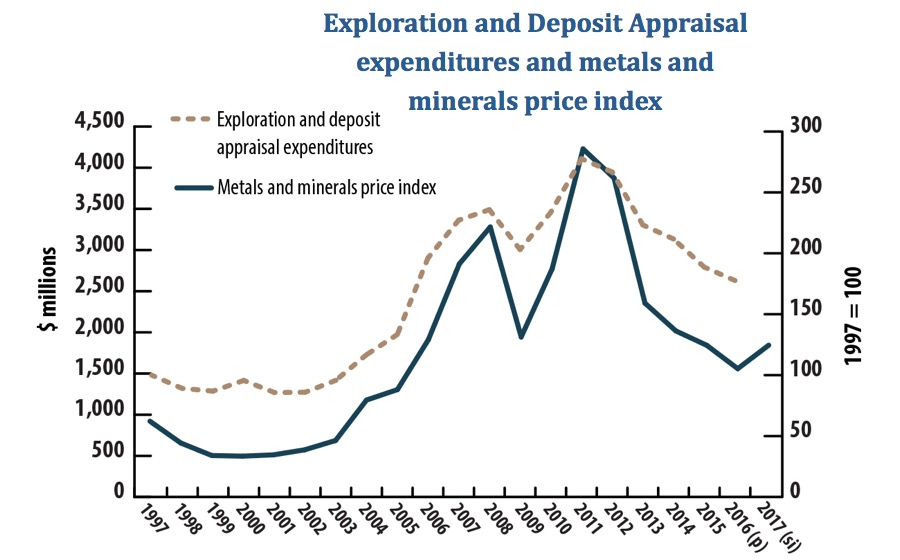Canada’s Northwest Territories and Nunavut, two of the three regions with the lowest income per capita, have experienced a dramatic decline in exploration spending during the last ten years, data from Natural Resources Canada (NRCan) shows.
According to NRCan most recent numbers, spending in the N.W.T. is expected to decline to $81.3 million this year, down from $90 million in 2017. Exploration spending in the territory peaked in 2007 at $194 million.

Source: Natural Resources Canada.
In Nunavut, the situation is even worse. Investment in mineral exploration in Canada’s newest and northernmost territory is expected to fall by more than $58 million. That contrasts with the $169 million the territory received last year and is a far reach from the $338 million companies spent on mining exploration in Nunavut in 2007.
Across the country, instead, mineral exploration and deposit appraisals have picked up. In 2017, spending on both increased almost 30% to 2.1 billion, from $1.6 billion a year earlier. And for this year, NRCan is predicting a further 6%cent increase, to $2.2 billion.
Tom Hoefer, executive director of the N.W.T. and Nunavut Chamber of Mines, believes what’s deterring investors are ongoing disputes over land claims in the Northwest Territories, along with their interim land withdrawals.
"To find a mine you have to be able to explore the ground for it," Hoefer told CBC News.

Source: Natural Resources Canada.
In Nunavut, in turn, land use permits are being granted and then put on hold due to changing mandates on land use and access related to the Draft Nunavut Land Use Plan, the latest annual global survey of mining executives released in February by the Fraser Institute shows.
Mineral exploration in Canada’s northern regions has led to major discoveries in the past, including Rio Tinto’s Diavik diamond mine, as well as De Beers and Mountain Province Gahcho Kué diamond mine.
The post Exploration spending in Canada’s poorest regions keeps sliding appeared first on MINING.com....

